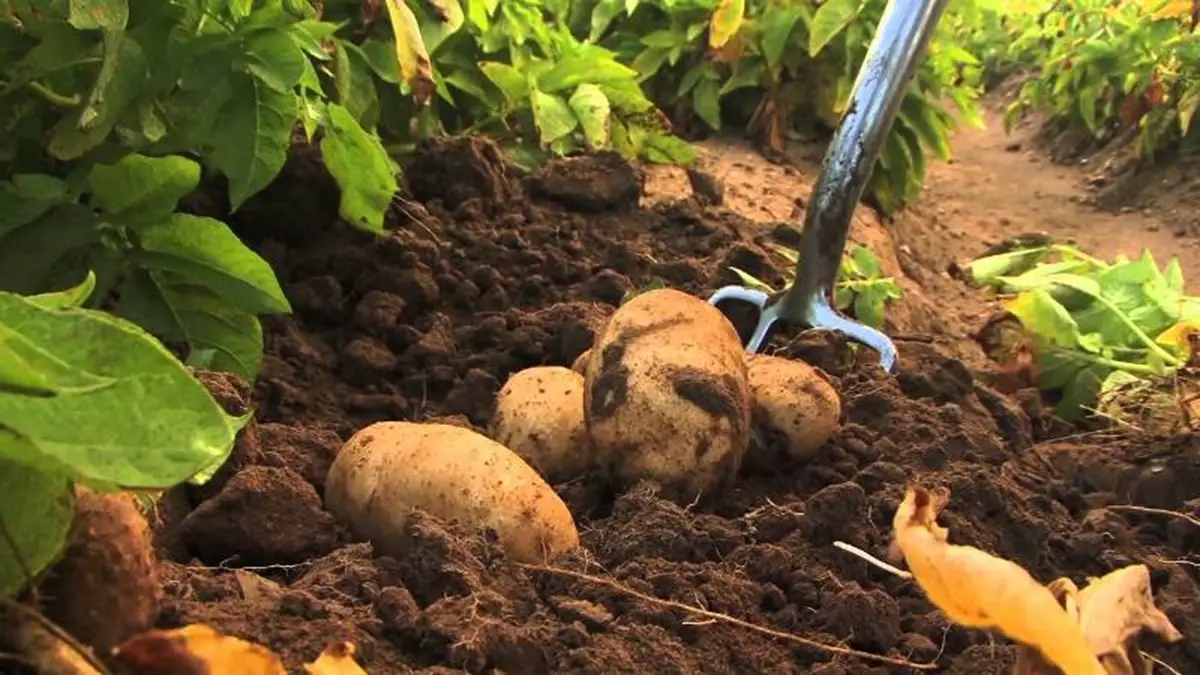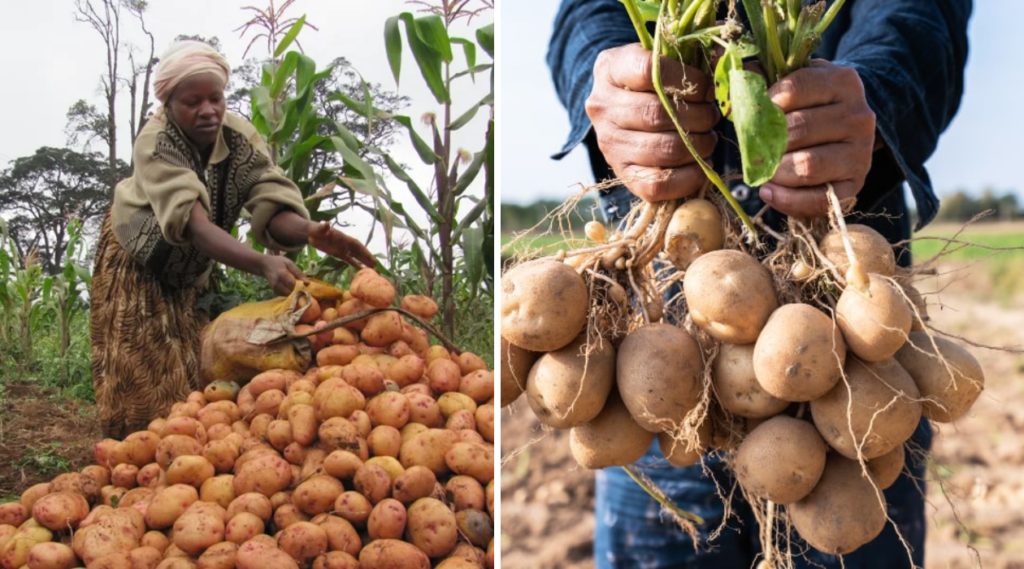
Food safety is of utmost importance in agriculture, particularly with regard to fresh produce such as potatoes. Potatoes form part of Kenya’s staple crop after maize and are an integral component of its national diet.
Potato is considered to be an invaluable staple food source and cash crop in Kenya, providing income to many individuals and providing householders with staple food needs as well. Therefore, protecting these crops against foodborne pathogens becomes of great importance.
Foodborne pathogens are infectious biological agents which cause foodborne illness; foodborne illness refers to illnesses caused by eating food contaminated with pathogens.
Foodborne illnesses have the potential to have devastating health repercussions and economic costs as well as damage the reputation of Kenya’s potato industry, so employing robust mitigation strategies in Kenya plays a crucial role in terms of agriculture and food security.
Even with its many economic and nutritional benefits, potatoes present food safety concerns due to potential contamination with various pathogens that could enter at any point along their value chain – from planting through to consumption.
Common foodborne pathogens associated with potatoes
Salmonella
Salmonella, an organism capable of invading potatoes during cultivation, harvesting, or processing, can contaminate them during their growing, harvesting, or processing phases – and is responsible for almost 30 percent of potato outbreaks. Salmonellosis results from infected potatoes and is often manifested with symptoms including diarrhea, abdominal cramps, fever, and vomiting.
Escherichia coli (E. coli)
Escherichia coli (E. coli) can contaminate potatoes through contact with animal waste or water contamination, leading to severe gastrointestinal illness, including diarrhea, abdominal pain, and kidney failure in some instances.
Listeria monocytogenes
Listeria monocytogenes: Listeria is present in both soil and water environments and can contaminate potatoes during cultivation or postharvest handling, potentially leading to listeriosis, an illness caused by Listeria that ranges from mild flu-like symptoms to serious infections in vulnerable groups like pregnant women, the elderly, and immunocompromised people.
Campylobacter
Campylobacter may be commonly associated with poultry, but this pathogen can also contaminate potatoes through polluted water sources or improper handling, leading to diarrhea, fever, and abdominal discomfort if consumed by ingestion.
Clostridium perfringens
Clostridium perfringens: These bacteria thrive in poorly prepared or stored potatoes and, when consumed, may result in food poisoning with abdominal cramping and diarrhea as symptoms.
Norovirus
Norovirus: While norovirus is often associated with human-to-human transmission, it can also infiltrate food such as potatoes. Once in your system, norovirus causes gastroenteritis causing symptoms like vomiting, diarrhea, and stomach cramps – making for one nasty ride!
Clostridium botulinum
Clostridium botulinum: This bacterium is mostly associated with cooked potatoes that have been exposed to oxygen-devoid environments, like aluminum foil wrappings. Although resistant to heat and can survive heat exposure, the Clostridium botulinum bacterium remains potentially lethal, killing over 100 people per teaspoonful! Its estimated impact can be devastating: just one teaspoon can kill over 100.
Glycoalkaloids
Glycoalkaloids: Though not pathogens, glycoalkaloids pose a concern to potato production. Naturally occurring in potatoes and toxic to humans at higher levels. Glycoalkaloids accumulate near the peel of tubers exposed to sunlight for prolonged periods, stimulating formation near its surface; cooking or frying do not break them down to reduce exposure resulting in vomiting, diarrhea, and abdominal discomfort for consumers exposed.

Factors Contributing to the Contamination of Potatoes
Foodborne pathogen contamination of potatoes may result from various factors, including inadequate agricultural practices, poor postharvest handling practices, improper storage conditions, or the absence of awareness about food safety among stakeholders.
Therefore, prevention and mitigation strategies need to be in place in order to manage risks properly.
To reduce risks associated with foodborne pathogens in potatoes, it’s imperative that proper food safety practices be observed.
Strategies and Best Practices for Mitigating Foodborne Pathogens in Potatoes
- Conformance to Good Agricultural Practices (Gaps) includes proper land preparation, irrigation management, and pest management, as well as hygiene during planting and harvesting to decrease pathogen contamination risks during cultivation.
- Utilization of Safe Water Sources: When handling postharvest crops or using irrigation water as part of postharvest handling operations, ensure it comes from uncontaminated sources to ensure foodborne pathogens don’t lurk within. Contaminated sources could pose significant threats to foodborne pathogens.
- Storage and Transportation: Utilize safe postharvest handling, storage, and transport practices in order to prevent contamination of products as they remain stored or shipped from farms, as well as prevent the growth of pathogens during storage and transit. Maintain appropriate temperatures and humidity levels throughout.
- Hygiene and Sanitation: Prioritize good hygiene and sanitation practices at every stage in the value chain, from processing facilities and marketplaces to storage containers and processing areas. Regularly clean and sanitize equipment as part of this effort.
- Integrated Pest Management (IPM): Use IPM practices to minimize chemical pesticide usage and risk reduction related to residues on potatoes.
- Quality Seed Selection: Use certified and disease-free seed potatoes to prevent the spread of pathogens between crops.
- Avoid cross-contamination during handling and processing as much as possible to minimize cross-contamination during handling and consumption.
- Thoroughly cook potatoes prior to consumption in order to destroy any potential pathogens that might exist in them.
- Education and Training: The education of farmers, processors, food handlers, and consumers regarding proper handling and storage to prevent contamination is vital in maintaining food safety practices and preventing contamination in food environments. Furthermore, consumers need to learn proper handling and storage practices at home in order to stay healthy.
- Monitoring and Testing: Establish regular monitoring and testing programs in order to detect any possible contamination issues in potatoes, such as pathogen detection or chemical tests for pesticide residues. Testing should include both microbiological testing for pathogens as well as pesticide residue tests for safety purposes.
- Traceability: Establish a system of potato traceability that permits the identification of their source and distribution in case of food safety incidents.
- Consumer Education on Proper Cooking and Handling by Consumers: Inform consumers on the significance of carefully cooking potatoes as well as practicing proper food handling and hygiene within their households.
- Public Awareness Campaigns: Launch public awareness campaigns about food safety risks related to improper handling of potatoes and other fresh produce.
- Government Regulation and Enforcement: Strengthen food safety regulations and enforcement mechanisms so as to ensure full adherence to established standards and guidelines.
With increasing consumer demands for safe and nutritious food sources, protecting consumer health by mitigating foodborne pathogens in Kenyan potatoes has become a collective responsibility that should serve to maintain agricultural livelihoods and increase national food security. By investing in enhanced food safety practices, Kenya can ensure its potatoes will continue providing nourishment and prosperity for generations yet unborn.
This article forms part of the RECLAIM SUSTAINABILITY (RS!) Food Products Project by the Kenya National Farmers Federation (KENAFF) in collaboration with Solidaridad.
